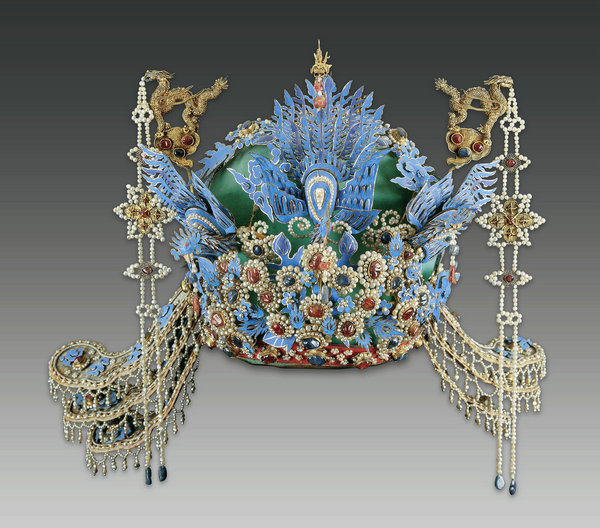Historic mausoleum's story of love, exile, life and death
 |
|
A crown for empress Xiaoduan. [Photo provided to China Daily] |
"But that was before Emperor Yingzong, the eighth emperor of Ming, also a tragic one, officially banned human sacrifice."
Then, there was the third and the innermost chamber, where the giant red-lacquered wooden coffins of the emperor and his empresses were housed. There the posthumously ordained Empress Xiaojing lay quietly, but unmistakably, beside her husband. (Empress Xiaoduan's coffin lay at the other side.)
Sun, who was standing right beside the three coffins when they were opened, had a close view of the corpses.
"The hairpins Xiaojing wore were mostly made of jade, and Xiaoduan's were gold. As for the emperor, he was wearing a black bamboo-woven hat with gold dragon decorations. Judging from the bones, he had a long narrow face and mustache, not tall at tall-probably about 164 cm, and slightly hunchbacked."
At the time the emperor received his uninvited guests, Consort Zheng, whom many today believe was the true love of his life, lay solitarily in her own tomb, about three kilometers away. During her life she was viewed as a threat not only to Xiaojing's son, but also to the entire succession of the ruling family.
















